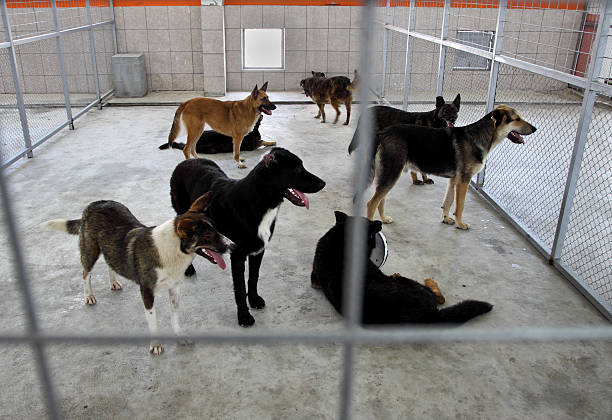Protopopova, A., Gilmour, A. J., Weiss, R. H., Shen, J. Y., & Wynne, C. D. L. (2012). The effects of social training and other factors on adoption success of shelter dogs. Applied Animal Behaviour Science, 142(1), 61-68. doi:https://doi.org/10.1016/j.applanim.2012.09.009
Dogs can be held temporarily or permanently in kennels for a number of reasons, not necessarily for their own benefit. Although restrictive environments have been associated with poor welfare, priorities for research and change cannot be understood unless the various aspects of the kennel environment are appreciated separately.
Titulaer, M., Blackwell, E. J., Mendl, M., & Casey, R. A. (2013). Cross sectional study comparing behavioural, cognitive and physiological indicators of welfare between short and long term kennelled domestic dogs. Kennel Design Environment welfare
Stephen, J. and Ledger, R. A longitudinal evaluation of urinary cortisol in kenneled dogs, canis familiaris. environment kennel design welfare
Willen, R. M., Schiml, P. A., & Hennessy, M. B. Enrichment centered on human interaction moderates fear-induced aggression and increases positive expectancy in fearful shelter dogs
Coppola, C.L., Enns, R.M., and Grandin, T. Noise in the animal shelter environment: Building design and the effects of daily noise exposure. Environment noise kennel design welfare





